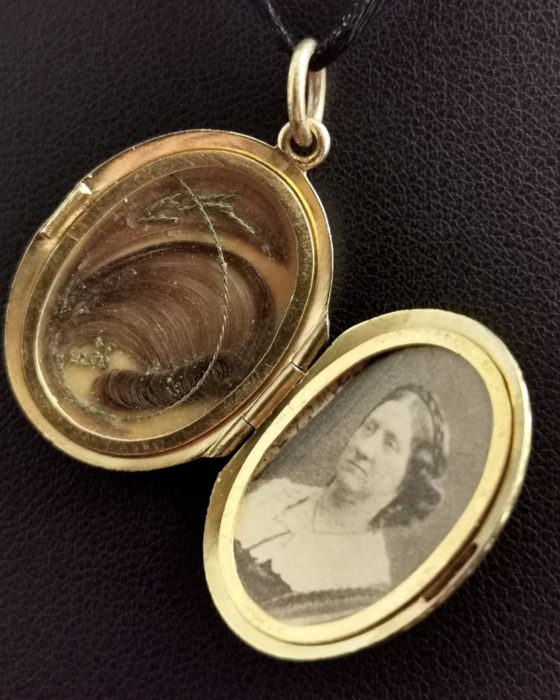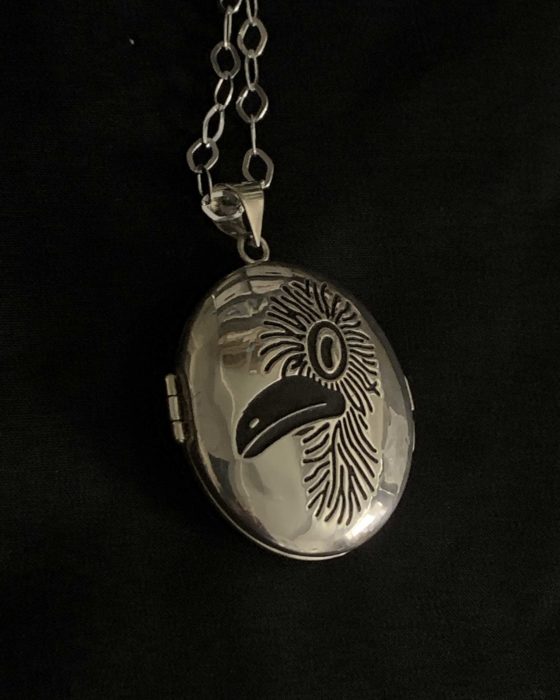A History of the Forget-Me-Not Locket
Do you know about the Victorian mourning customs that have inspired Gary Baseman’s work in his new exhibition Memento Moa?
During the 1800’s the reign of Queen Victoria influenced many aspects of daily life, not only in England and its broad-reaching commonwealth, but in America as well. This influence included the proper way to mourn. “During the Victorian era, mourning was a carefully calibrated social ritual, with fashion, jewelry, and photography all playing important roles in the public representation of grief,” says author Geoffrey Batchen in Forget Me Not.
Although mourning jewelry dates back to the 1600s, these keepsakes gained popularity when Queen Victoria mourned the death of her husband, Prince Albert. A photography enthusiast, she commissioned remembrance jewelry with miniature portraits of the deceased. Photographic jewelry became a staple of professional portrait photographers of the mid-19th century.
Transformed into a visual symbol, mourning lockets display one’s affections. Such mementos speak to the feeling that life and time are precious, thus carrying one’s sentiment for the deceased. To enhance the power of the image, these personal mementos were sometimes accompanied with inscriptions, signatures, handwritten notes or even poems behind the photograph or hidden inside the locket.
Wishing to preserve the memory of his beloved cousin Beverly, Baseman takes inspiration from this Victorian tradition to symbolize the emotional bond they shared. Creating a special locket with the image of a moa, the pre-historic bird that in the artist’s words symbolizes “those who have passed and live in our hearts”, this locket accompanies the plush sculptural figure that he has named Manny Moa.
Available for others to acquire and give their own meaning to the locket (by inserting an image of someone lost), the artist shares the universal experience of grieving through this symbolic gesture.
Playing off the phrase “memento mori” which expresses the inevitability of death, Memento Moa becomes a compelling memorial experience, asking us not to forget those whose memory stays with us.


